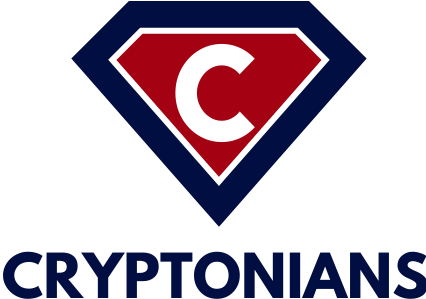The evolution of decentralized exchanges: A comparative analysis

The cryptocurrency world is undergoing a transformative phase as DEXes consider pivoting from AMM models to the more traditional order book structures.
Let’s dive into the evolution of DEXes as we explore the shift from automated market makers (AMMs) to the time-tested order book model. We must understand the inherent advantages and challenges of each approach, and discover how UTXO-based blockchains can reshape the trading landscape and bridge the gap between traditional finance and the dynamic world of crypto.
Quick takes
- DEXes address centralized exchange challenges, but centralized platforms still offer superior trading functionalities not found in Web3.
- The AMM model revolutionized DeFi but comes with limitations like impermanent loss and slippage.
- Order book models offer transparent price discovery and are highly compatible with UTXO-based blockchains.
- The crypto landscape is shifting from AMM-based DEXes to order book structures, bridging centralized and decentralized trading.
The emergence of DEXes: Addressing centralized exchange limitations
Decentralized exchanges (DEXes) have risen as alternatives to the challenges presented by centralized exchanges, which include vulnerabilities to hacks, obligatory KYC verifications, opaque account management and control over private keys. Yet, centralized platforms play an indispensable role, serving as gateways for beginners into the cryptocurrency realm, acting as guides into this new industry.
Traditional exchanges have often hinged on the order book model to optimize capital use and enable dynamic price discovery. In contrast, many modern DEXes utilize the AMM system, which brings its own set of inefficiencies and challenges to be delved into subsequently.
For DEXes to resonate with and be adopted by mainstream financial entities, they may want to consider integration with an order book architecture, thereby appealing to seasoned traders searching for advanced functionalities currently only found in traditional financial systems.
AMM: A revolutionary shift in the DeFi landscape
The introduction of the AMM model marked a pivotal change in the DeFi ecosystem. The drive to embed the order book system within DEXes led to the evolution of the AMM model, an idea expounded by Ethereum’s co-founder, Vitalik Buterin. This innovative approach addressed the lingering liquidity challenges that had previously hampered the widespread adoption of DEXes on platforms like Ethereum. As a result, the majority of DEXes operating on both Ethereum and BSC have since embraced this model.
Limitations of the AMM model
The primary challenge faced by AMM DEXes is the phenomenon of impermanent loss, where the price fluctuation of tokens inside a pool can sometimes lead to liquidity providers securing less value than if they merely held their assets. Additionally, the model is prone to slippage, especially in low-liquidity pools, resulting in trades that may be executed at less favorable rates. AMMs demand equal values of both tokens in a pair, which isn’t always capital efficient, and the price determination is based on the asset ratio in the pool rather than genuine market dynamics, occasionally causing less accurate price representation.
Furthermore, the AMM design can inadvertently open doors for arbitrage opportunities. While these arbitrageurs help maintain price uniformity across markets, they do extract value from the pool, potentially affecting liquidity providers adversely.
Finally, the absence of diverse order types, like limit or stop orders, restricts strategic trading.
The order book model
Order book-based exchanges are the prevalent standard in global financial markets. At the core of these exchanges is an order book, a dynamic, continually updated list of buy and sell orders.
This mechanism facilitates transparent price discovery, as traders can directly see the supply and demand at different price levels. Furthermore, it offers traders flexibility in executing different types of orders, such as limit or market orders, ensuring that participants can implement nuanced trading strategies.
The real-time nature of the order book also provides insights into market depth and sentiment, crucial for both institutional and retail traders. The adoption of the order book model across major global exchanges underscores its reliability and effectiveness in maintaining market integrity.
Why UTXO-based blockchains work well with order book systems?
The order book model is especially suitable for UTXO-based blockchains trades can be made peer-to-peer as opposed to aggregated into liquidity pools. Moreover, transactions are processed with high concurrency, enabling faster order matching, while maintaining full transparency into the order book state and trading history.
Furthermore, UTXO systems’ intrinsic capability to process transactions in parallel is highly beneficial for order book mechanisms, which have to process numerous disjoint buy and sell orders simultaneously. Therefore, intricate functionalities of order book operations — from order matching to settlement — can be automated in a computationally efficient manner, while benefiting from the security and reliability of smart contracts.
In essence, adopting the order book model on UTXO-based blockchains could help bridge the gap between the centralized and decentralized trading worlds.
Final thoughts
The cryptocurrency world is undergoing a transformative phase as DEXes consider pivoting from AMM models to the more traditional order book structures. While AMMs offer unique advantages, their limitations have paved the way for the adoption of order book models, especially on UTXO-based blockchains.
Such a transition could help address the challenges of AMMs, merging the benefits of centralized trading with decentralized platforms. As DEXes mature, the fusion of traditional financial mechanisms with decentralized architectures holds promise, potentially revolutionizing the trading landscape, enhancing user experiences and promoting more extensive adoption of DeFi platforms.
The future of crypto trading will likely involve features from the intersection of the two — bridging the realms of traditional finance and the burgeoning crypto universe.
CSO at Genius Yield, a next-generation DEX & CEO at gomaestro.org a Web3 infrastructure provider.
This article was published through Cointelegraph Innovation Circle, a vetted organization of senior executives and experts in the blockchain technology industry who are building the future through the power of connections, collaboration and thought leadership. Opinions expressed do not necessarily reflect those of Cointelegraph.

